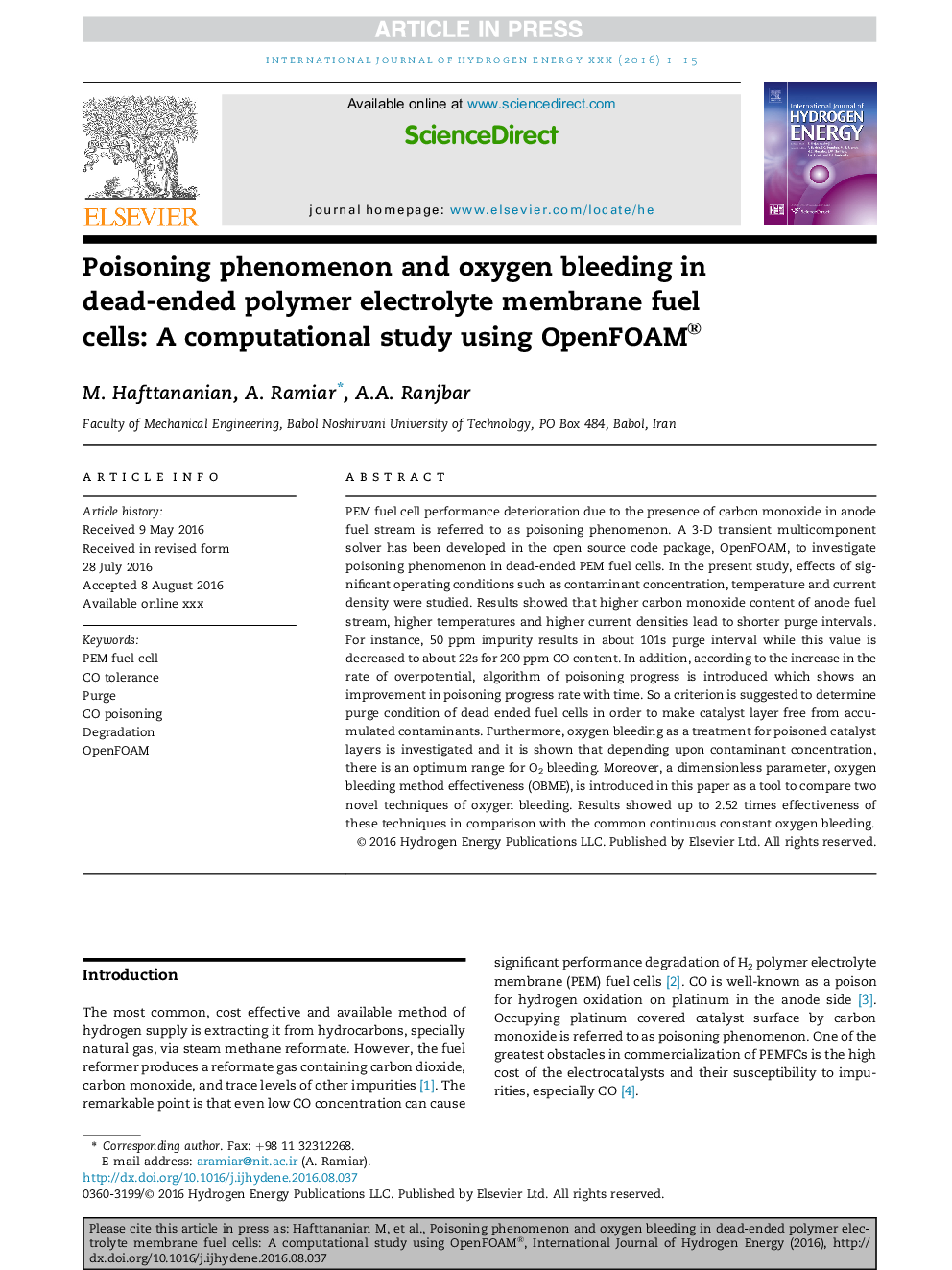| Article ID | Journal | Published Year | Pages | File Type |
|---|---|---|---|---|
| 5147137 | International Journal of Hydrogen Energy | 2016 | 15 Pages |
Abstract
PEM fuel cell performance deterioration due to the presence of carbon monoxide in anode fuel stream is referred to as poisoning phenomenon. A 3-D transient multicomponent solver has been developed in the open source code package, OpenFOAM, to investigate poisoning phenomenon in dead-ended PEM fuel cells. In the present study, effects of significant operating conditions such as contaminant concentration, temperature and current density were studied. Results showed that higher carbon monoxide content of anode fuel stream, higher temperatures and higher current densities lead to shorter purge intervals. For instance, 50Â ppm impurity results in about 101s purge interval while this value is decreased to about 22s for 200Â ppm CO content. In addition, according to the increase in the rate of overpotential, algorithm of poisoning progress is introduced which shows an improvement in poisoning progress rate with time. So a criterion is suggested to determine purge condition of dead ended fuel cells in order to make catalyst layer free from accumulated contaminants. Furthermore, oxygen bleeding as a treatment for poisoned catalyst layers is investigated and it is shown that depending upon contaminant concentration, there is an optimum range for O2 bleeding. Moreover, a dimensionless parameter, oxygen bleeding method effectiveness (OBME), is introduced in this paper as a tool to compare two novel techniques of oxygen bleeding. Results showed up to 2.52 times effectiveness of these techniques in comparison with the common continuous constant oxygen bleeding.
Related Topics
Physical Sciences and Engineering
Chemistry
Electrochemistry
Authors
M. Hafttananian, A. Ramiar, A.A. Ranjbar,
